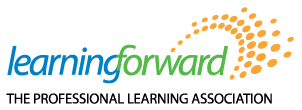Stages and Tools for the State Education Agency (SEA)
Professional Learning System Framework
Overview
This stage supports leaders who are committed to implementing, integrating and sustaining high-quality instructional materials and professional learning for all students and educators. It was designed, and is intended to be used, with these guiding principles in mind:
-
- It is a flexible support tool for state leaders
-
- Committing to a mindset supportive of high-quality instructional materials and professional learning requires conducting important conversations about common misconceptions before taking action toward creating excellent outcomes for all students
-
- The four commitments to high-quality instructional materials and professional learning should be used selectively, chosen through a needs assessment using state and district data, and implemented using the action plan.
-
- The actions for each commitment to high-quality instructional materials and professional learning should be viewed as a menu of possible strategies to be carefully chosen and informed by state and district data.
Start with a diagnostic assessment
Work through the tool
Finish with reflection questions
The four commitments described in the following tools require significant shifts in mindset and practice to provide and sustain outcomes for all students. Creating excellent outcomes for all students requires acknowledging that current, deep-seated mindsets exist about student access to rigorous coursework and educator access to content-based professional learning. After recognizing those mindsets, district and local educators can shift individual or collective mindsets supportive of high-quality instructional materials and professional learning. These shifts rest upon the powerful notion that student outcomes will not change until adult learning and behaviors change. As is the case throughout the entire tool kit, tools are preceded with a Where are we now exercise and followed with reflection questions.
References
Chiefs for Change. (2019). How states can help districts adopt high-quality instructional materials.
Available here.
Grissom, J.A. (2011). Can good principals keep teachers in disadvantaged schools? Linking principal effectiveness to teacher satisfaction and turnover in hard-to-staff environments. Teachers College Record, 113(11), 2552-2585.
Herman, R., Gates, S.M., Arifkhanova, A., Barrett, M., Bega, A., Chavez-Herrerias, E.R. , . . . Wrabel, S.L. (2017, December). School leadership interventions under the Every Student Succeeds Act: Evidence review (Updated and expanded). Santa Monica, CA.: RAND Corporation. Available here.
Opfer, V. D., Kaufman, J.H., & Thompson, L.E. (2016, Sept.) Implementation of K-12 state standards for mathematics and English language arts and literacy, Santa Monica, CA.: RAND Corporation. Available here.
Taylor, J. A., Getty, S. R., Kowalski, S. M., Wilson, C. D., Carlson, J., & Van Scotter, P. (2015). An efficacy trial of research-based curriculum materials with curriculum-based professional development. American Educational Research Journal, 52(5). Available here.
TNTP. (2018). The opportunity myth. New York, NY: Author. Available here.
